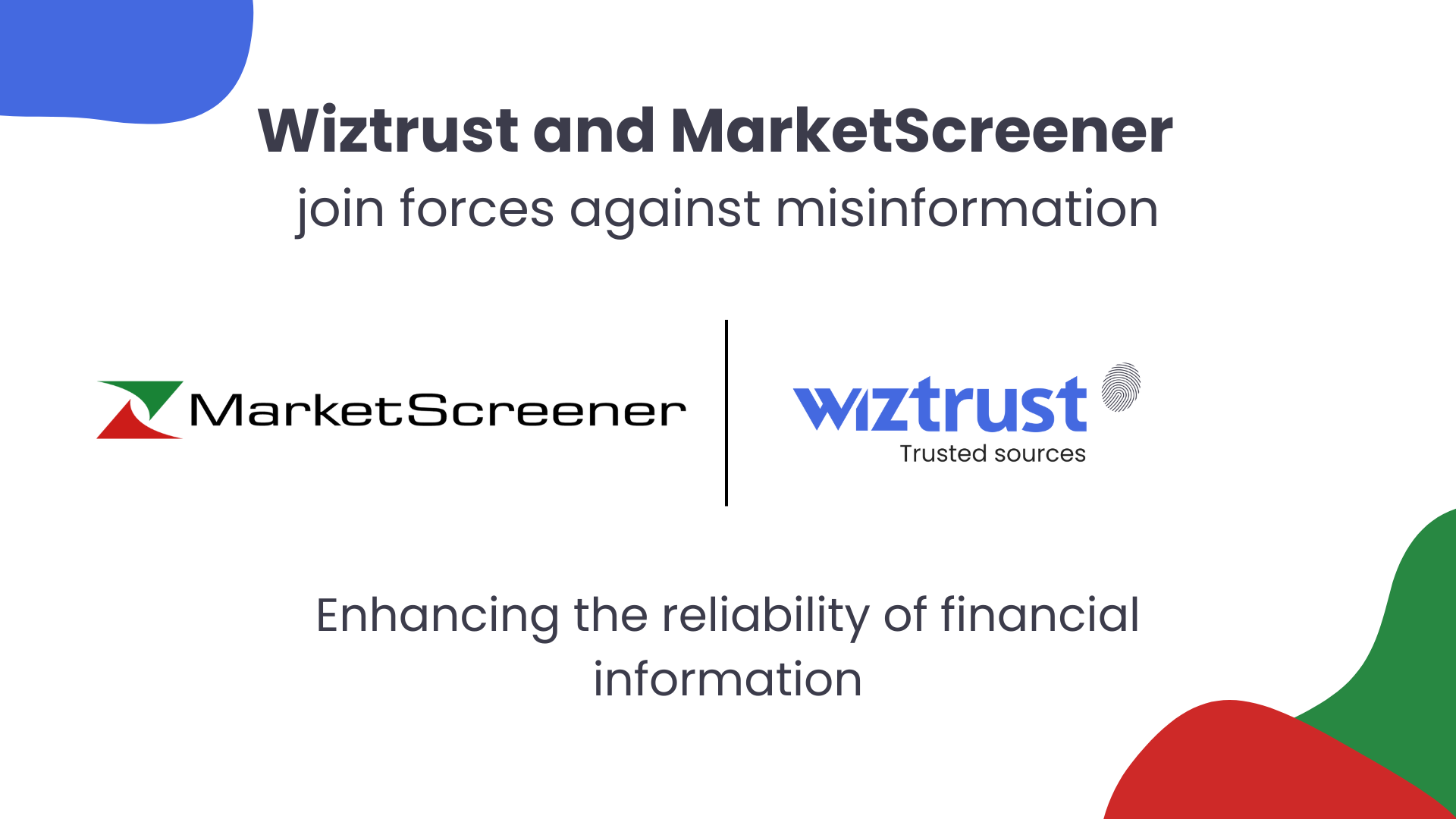Digital communication tools primarily enable the quantitative valorization of actions before the company's management. However, in a changing and unstable environment, they also serve as decision-making and anticipation aids.
If social networks have revolutionized the environment of the Communication Director, new digital communication tools—such as audience measurement, e-reputation, or content sharing—have transformed their role and work. A wide range of tools allows Communication Directors to better measure the impact of digital campaigns, define KPIs, and understand their audience more effectively. The paradigm and methodologies evolve, but the core of the work remains the same. How do Communication Directors adapt to these technological challenges and evolve their work with these new tools?
Valorizing Communication
In professional environments where communication is not always valued, the arrival of these digital communication tools allows for the extraction of numerical data. This seems to have enabled the affirmation of the legitimacy of the Communication Director's work within the company.
"We define KPIs upfront, and it's certain that with such measurement tools, they regain credibility," explains Delphine Penalava (SoLocal).
"It has pedagogical virtues internally, allowing us to reassess the impact of what we do in real-time. The culture of time, efficiency, and impact is completely different today," recounts Anne-Sophie Sibout (Edenred).
"The performance measures provided by digital communication tools help us demonstrate what communication produces, to valorize its impact and what it contributes to building stakeholder engagement," adds Sophie Leprettre (Bel).
« The KPIs help evaluate the interest of our stakeholders in a subject or their lack of interest in others, which forces us to adapt our discourse and formats to be convincing and engaging. » Sophie Leprettre (Bel)
By precisely measuring the virality of a video, the number of positive mentions on social networks, or the engagement rate of a target audience, Communication Directors can highlight concrete results across different departments. They valorize results, draw up assessments, and use them to educate about future strategies.
"For communication teams that may lack purpose, when we arrive with existing technologies, it unites them around the project. Then, it's easier to distribute work across different company departments," recounts Marion Le Paul (Nexem).
« Communication creates value for the brand beyond pure business; it's not just a cost center. This is something that tools help valorize. » continues Anne-Sophie Sibout (Edenred).
« When there's no sense, communication can be seen only as a cost center. Tools help give it meaning and break this idea. » Marion Le Paul (Nexem)
By valorizing results, all departments can feel more involved, even if the transversality of communication in the organizational chart needs to be affirmed.
« I would like to define KPIs in a transversal way, so everyone has objectives for the same operation, and we can adjust in real-time. Departments still work too much in silos, which is frustrating. We need a reflection to work as a group and have a common goal with specific objectives. » recounts Delphine Penalva (SoLocal).
Beyond the internal upheavals caused by these technological advancements and new digital communication tools, the company's external relationships are also modified.
"There's an evolution in our profession: the Communication Department's mission is to create engagement with stakeholders, primarily employees and customers, who become key actors in the. It's also an opportunity to unite all the company's professions around this new challenge!"
More Precise and Rapid Digital Communication Tools
The ability of Communication Directors to iterate and adapt seems to increase at the same pace as technological progress.
« What's interesting for communicators is that these tools bring a progression curve and a test & learn logic. We receive results continuously. We can adjust, and therefore, we're less afraid to take risks. » explains Anne-Sophie Sibout (Edenred).
Dans cette même logique, elle envoie un bilan chiffré aux services concernés en fin d’opération, et renvoie le bilan avant d’en lancer une nouvelle.
In the same logic, she sends a numerical report to the concerned departments at the end of an operation and returns the report before launching a new one.
"We are both in creating engagement and serving other departments. There's an effort to be made so we don't become a communication agency within the company serving other departments. To get everyone on board, we need tools that measure the impact of our communication. We shouldn't be afraid to say when things aren't working. Digital communication tools also allow us to identify this," she continues.
« Boosting the number of followers, why not? But it doesn't necessarily match the set objectives. » Agathe Sanson (CNP Assurances)
Has communication become a measurable science? With numbers, curves, and graphs, new measurement tools allow us to know the effectiveness of a brand campaign and the percentage of positive opinions? The number of tweets, followers, mentions, likes... All these new data available to Communication Directors can create an addiction to figures and results, from which we must distance ourselves.
«We must be careful, as the risk is spending more time measuring actions than performing them. We need to find a balance without going too far. » recounts Anne-Sophie Sibout (Edenred).
If data collection is increasingly automated, human analysis is still necessary to draw valuable insights. More and more structures offer services to outsource these sometimes laborious and costly tasks. However, the question of trust and data ownership arises. Brands must choose to fully or partially internalize data collection and analysis.
«
Monitoring tools transmit raw data, but to analyze it, detect weak signals, nothing beats human analysis. It's internally, within our departments, that we have the most appropriate skills. »
analyzes Agathe Sanson (CNP Assurances).
Towards Internalization and Externalization of Data
To have better control and vision over their data, Rakuten has fully internalized its management and is developing a chatbot to handle basic customer service cases on social media.
« We need a lot of data, which is why we internalize as much as possible. By developing a chatbot on the Viber application (owned by Rakuten) for communication and social media, we would be able to create the perfect ecosystem. » anticipates Alexia Lefeuvre (Rakuten).
« IThere's a need for qualitative analysis that we currently lack. We shouldn't just produce data; we need to make it speak. » Alexia Lefeuvre (Rakuten)
For Communication Directors, the debate over internalizing or externalizing tools is not solely economic.
«Internalizing is good, but it's very time-consuming to compile and analyze everything. And for me, outsourcing this work to an external partner is also a guarantee of having a neutral and critical view. » explains Delphine Penalva (SoLocal).
«
There's a real debate about who to entrust this to. If it's an agency that worked with us on the operation, they will tend to embellish the results. If it's someone completely external, we don't know exactly what they're doing. To fill this transparency and trust gap, tools are developing with full transparency models where the client remains the data owner. »
according to Raphaël Labbé (Wiztrust).
The Time of Communication Accelerates, So Does That of Communication Directors
The time of communication accelerates, and so does that of Communication Directors. Figures arrive more regularly and quickly, allowing for more efficient work organization.
« It's true that we save time, but the activity of Communication Departments has increased in quantity and quality. Since tools are faster, they demand quicker results, which accelerates the pace. The luxury would be to have a documentation service that analyzes data daily based on the company's needs. » Marie-Christine Lavaux (Garance Conseils).
« These new tools at least allow for the mutualization of certain content for internal and external communication. So, it already saves time for teams and enables them to work together. » adds Agathe Sanson (CNP Assurances).
« Objectives are measured over time. Before, we analyzed data after a year; now, we do it after three months. There are decisions that can be made on the fly. » Marie-Christine Lavaux (Garance Conseils).
The multiplication of digital communication tools, data, and results could create a form of information overload among communicators. Between internal data, tools, social networks, and press, it's difficult to clearly maintain vision and objectives. If new technologies push for speed, communication strategies can be long-term. The Communication Director must balance these temporalities: those of technology, direction, employees, and their own strategy.
« We can lose people to gain them later. If we stay in the short term and adjust constantly, we won't succeed in creating engagement. Sometimes we invest for the long term. Our value is not to panic and explain. Sometimes, we know we engage in year one, and the results come in year two. » analyzes Anne-Sophie Sibout (Edenred).
« But digital audiences change very quickly, making it extremely difficult to have a long-term strategy, especially when working in several countries where uses differ completely. » adds Sophie Leprettre (Bel).
« Today, no one can predict how audiences and uses on social networks will evolve. The question for the Communication Director is whether it's about accepting usage or rather agility and constant repositioning ? » Sophie Leprettre (Bel)
The analytical role of the Communication Director is thus reinforced, with a growing need for vision and perspective.
«Teams are sometimes in information overload. They are stuck in their own KPIs. Our value will largely be about asking why? What are we doing and why? If we don't ask these questions, we miss something and let technology supplant our expertise, intuition, and analytical capacity. » analyzes Anne-Sophie Sibout (Edenred).
« We often present interesting data, but we lack the conclusions to draw from it. Our value as communicators lies in this analytical capacity. » Anne-Sophie Sibout (Edenred)
If the legitimacy of the Communication Director in crisis communication situations is no longer to be demonstrated, a certain denigration still persists on other subjects, despite new digital communication tools.
« It questions our role. Often, communication is not taken seriously enough in companies. The key is the company culture, the CEO's vision, and the Communication Director's ability to make choices and take risks. Compared to other positions, we have this role of conductor. Tools are great, but if the Communication Director is not well-equipped to face what's coming, they serve no purpose. » analyzes Delphine Penalva (SoLocal).
« If we're not able to lead these tools towards a common objective, it's pointless. » adds Alexia Lefeuvre (Rakuten).
In a context where employees and management are increasingly expressing themselves personally and unfiltered on social networks, the Communication Director's role as a strategist anticipating future challenges is amplified. Employee advocacy is an interesting lever for this, as well as a role of accompaniment and advice, particularly for CEOs hesitant about social networks or those who are too talkative. A good partnership between the CEO and the Communication Director is essential, along with good trust relationships with all other departments and directions.
More broadly, digital technology is evolving the dialogue between different company actors and its ecosystem, even within
the company with tools like Workplace. The Communication Director is not meant to dictate what to say but to provide the keys to a successful dialogue.
« Social networks are made up of multiple communities and sensitivities; it's important to develop emotional intelligence. Social networks are also a reflection of the world, allowing us to fuel reflection on our social responsibility as a brand. » expands Sophie Leprettre (Bel).
Instead of replacing them, technologies seem to amplify the deeply human functions of the Communication Director—analysis, intuition, and sensitivity.
 On 29 April, 2025
On 29 April, 2025




 5 min
5 min
